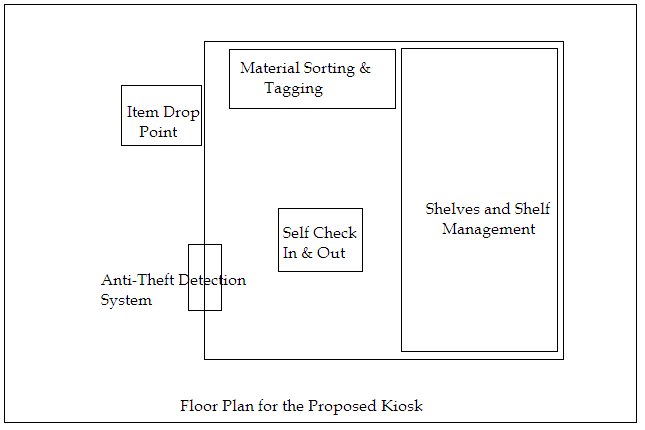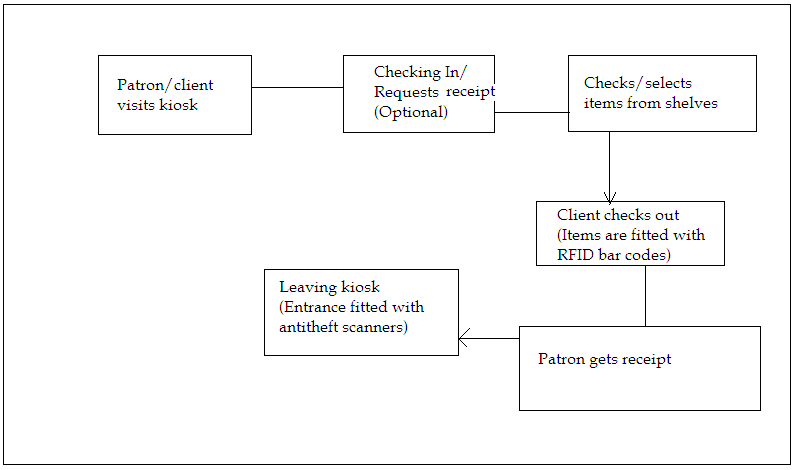Modern technological developments are transforming human activities, processes, and behaviors. The proliferation of handheld devices and smartphones is discouraging more people from visiting libraries physically. The traditional reading culture in this community has also been affected negatively. Many people are currently busy focusing on their career goals and aims. Long queues witnessed in public institutions make it impossible for people to visit them. The decision to offer self-serve services will transform the current situation by encouraging more citizens to benefit from this facility. The purpose of this proposal is to explain and describe why self-serve kiosks are needed in my local public library for patrons to check materials in and out.
Operational, Technical, and Economic Feasibility
The introduction of self-serve kiosks is a revolutionary idea that is capable of improving the operations of the local public library. The institution will be required to purchase and install appropriate machines depending on the targeted number of clients. This means that members of staff will be able to carry out other duties in different kiosks. Technicians will ensure that such systems work efficiently. The model will reduce queues and improve the level of privacy (John, Sood, and Scholfield, 1). This strategy will streamline the nature of operations by creating additional space for various resources, including books, compact disks (CDs), scanners, and computers (Yusof and Saman, 2). The library will transform its activities, promote service delivery, and handle complaints much faster.
The technical requirement for this proposal revolves around the use of a Radio Frequency Identification (RFID) technology. This will allow patrons to return or take library items instantly throughout the day. Advanced RFID technology will require that a tag is attached to every book. Such an innovative strategy means that labels will contain programmed serial numbers. The inclusion of anti-theft technology will reduce chances of theft (Pal and Sharma, 3). The system will also ensure that unreturned materials are tracked immediately. This technology is cheap, affordable, reliable, manageable, and available, thereby making it feasible for this public library.
The idea of establishing self-serve kiosks appears to be economically practical due to various reasons. Firstly, the model will minimize the library’s expenses by reducing workers and operations. Secondly, the suggestion will increase the demand for a wide range of items at reduced costs. Thirdly, RFID technology is capable of minimizing the rate at which different resources are handled manually (Pal and Sharma, 3). This development will ensure that books and other materials do not age quickly. Finally, it is easy to expand the use and application of advanced technology at reduced costs, thereby maximizing financial returns.
Patron-Kiosk Interaction
The proposed kiosks will require specific technologies, installations, staff members, and resources to make them functional and capable of fulfilling stakeholders’ demands. All materials and library cards will have bar codes supported by the RFID technology (Pal and Sharma, 3). There will be a book drop counter, tagging point, self-check in and out system, shelves for materials, and an antitheft detection system (Surname, 4). The kiosk will be designed in such a way that the installed computers provide receipts for dropped and checked out materials.


Patrons will initiate the process by applying for library cards from kiosks. These will have unique bar codes for borrowing and returning different materials. Individuals will check in using their cards and collect appropriate books. These items will have codes supported by the installed RFID technology. They will then check out from the kiosk using the new system. Receipts will be produced upon user request (Yusof and Saman, 2). Users leaving the library will be scanned by the antitheft technology installed at the exit door (Surname, 5). Materials will be returned at designated counters. The above user-case diagrams offer detailed descriptions of all interactions and functional requirements for the suggested kiosks.
Instructions for Using Kiosks
The installed self-serve machines are easy to use for all patrons and other members of the public. Please follow these instructions and guidelines carefully to use this kiosk efficiently:
- Any service requested from this kiosk is available to individuals who use the Entry and Exit doors only.
- When borrowing a book or CD, select Borrow on the available touch screen. The next step is to swipe your electronic library card. Additional instructions will then appear on the computer screen.
- Place books in the hole at the bottom of the machine. Before selecting any option, ensure that every item is displayed on the screen. If not, remove the books and insert them again. Select Confirm once all inserted items have appeared on the screen.
- Patrons should provide additional information to staff members when required books and other items are missing in the kiosk. Individuals will be notified via text messages (TMs) when such materials arrive in a specific kiosk.
- When returning a book or any other item, touch Return on the screen. The next step is to place the items or books in the machine and follow the outlined step-by-step procedures on the screen. Ensure that all books are displayed and checked out using the system.
- Your library card is needed for each of these processes: when returning books and other items, visiting the kiosk, and borrowing.
- Users can check the status of their accounts instantly by swiping their cards and selecting Account. The system also allows them to renew books after the expiry of the requested time. Patrons can also pay any fines and charges respectively using the available technology.
- Follow the provided on-screen instructions if you encounter any challenge when using the installed self-service system. Users can also ask those at the helpdesk for support or guidance.
- Patrons are requested to provide timely suggestions that will ensure that this kiosk improves the quality and sustainability of services available to the greatest number of users.
- We are looking forward to continue serving you better and supporting your objectives. This change will promote a reading culture.
Sources
Chelliah John, Suresh Sood, and Sally Scholfield. 2015. Realizing the Strategic Value of RFID in Academic Libraries: A Case Study of the University of Technology Sydney. Web.
Mohd Kamir Yusof and Md Yazid Saman. 2016. The Adoption and Implementation of RFID: A Literature Survey. Web.
Nirmalendu Pal and Ajay Kumar Sharma. 2017. Implementation of RFID Technology in Library. Web.
Student Name. 2009. Chart 1. Own creation.
Student Name. 2009. Chart 2. Own creation.